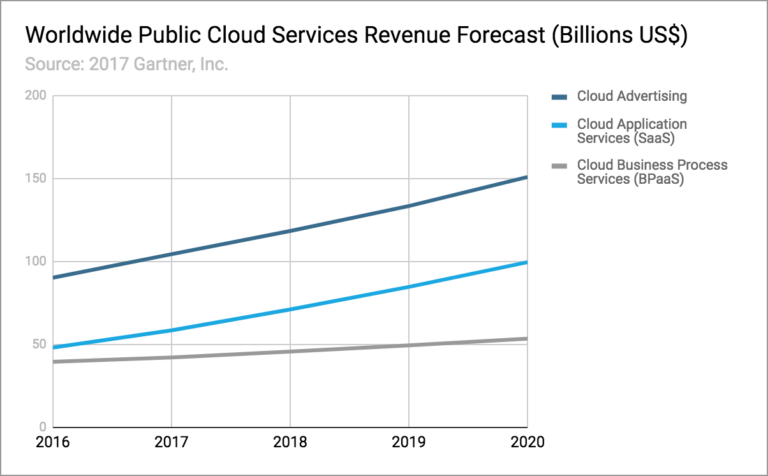

Wednesday 13 March 2019,
by Michael Koenig
It’s about time pharmaceutical companies discover a cure for their marketing migraines. The missing flexibility, scalability and accessibility of traditional digital solutions represent a growing gap between industry, doctors and patients that will soon become too big to fill with just the usual brute-force deployment of time and material. On-demand services have disrupted all kinds of businesses, from entertainment to logistics, and they will certainly not stop at the gates of our noble manufacturers of drugs and supplements as you will read in this article.
The underlying need to do more with fewer means to focus – on doing the right things with the right people. It’s just that these people don’t necessarily have to be sitting at your own company. Solutions should be tailored around what you need instead of what you think you want, and you probably don’t want to be running a data centre when you’re supposed to be in the life and sciences business.
If you ever used Google Docs, Dropbox or Spotify then you should already have a pretty good idea of what Software as a Service (SaaS) looks like but in case you do not; SaaS is software that is owned, delivered and managed remotely, maintained by its creator and not hosted by an individual. In most cases, you just access the software directly through your web browser. Pharma giants have just started adapting this licensing and delivery model for their marketing toolchain and from what we hear with striking results. Prescription and subscription may go together after all.

Sometimes it seems to me as if there has ever been a stone age in digital marketing, we’ve just merely outgrown from it. Sales presentations pre-installed on ancient tablets, customer data stored in separate silos all over the place, content management systems that heavily depend on gatekeepers for getting any work done. Sounds familiar?
There is a multitude of content management systems (CMS) out there doing a great job editing, storing and presenting marketing content. And chances are you have at least one or two of them under your roof. As a global player, though, it’s not unlikely your IT department runs up to half a dozen (or more) systems, working in parallel, introduced at various times in corporate history, with its own cluster of servers and services, and people who know how to operate them.
It’s like having a cake and owning the bakery, too.
Each CMS probably came with a new way of setting objectives and measuring performance, and before you know it you need a whole stall of people aggregating data, analysing your web server logs, and running reports for the management board. Wouldn’t it be great to rent the most up to date CMS like you rent a car?
If you ever accompanied a sales representative visiting a healthcare professional, chances are you witnessed how he left him or her an electronic sales aid on a tablet computer together with a printed brochure “just in case”. In the paperwork, the doctor would then find the most recent data, references, and studies that “didn’t find their way” into the electronic publication.
Now that’s what I call anachronistic. Holding a print shop ready because it seems easier to maintain visuals made of ink and paper than animations on an iPad. Wouldn’t it be comfortable to edit eDetailers like you do in PowerPoint?
So you have a customer relationship management (CRM) system. The one that isn’t connected to anything in the building as if it’s running at a different voltage? With a feature list so extensive that it should basically call clients on its own? The one that has been set up by the IT guys you see once in a full moon?
Your sales staff is just using 20% of the capabilities of your CRM, you say? Then wouldn’t it make sense to only pay for those things that you use?
Why would you want to migrate your commerce and business technology stack to Software as a Service? Here is what we learned from working with Pharma’s top players lately:
If you’re looking to reduce costs and improve business functions, Software as a Service or SaaS could give you a competitive edge in life sciences.
Acquia Cloud Site Factory is a high-availability Drupal hosting and monitoring infrastructure across multiple web servers where your website projects can be implemented by your preferred agency. Cloud Site Factory is an open SaaS system which means you are not locked into Acquia and can change providers at any time if you prefer.
Veeva CLM Engage was designed to help your sales representatives meet with doctors online, gain a better understanding of the customer, and then use that information to better market to them. We at nitro can help you navigate the vast product portfolio of Veeva and implement your eDetail-ing so that you can update them with eDeta our CMS for eDetailers.
Salesforce CRM is a SaaS product Pharma organisations have adopted to bring customer relationship management to the future. It offers a wide variety of CRM categories and systems for sales, marketing and analytics, and if you need help with aggregating your analytics data from different sources like Webtrends and Google, we can do this with our HONE dashboard.
Hone is a dashboard for collaboratively defining and measuring key performance indicators (KPI) such as clicks from advertising, conversions and user engagement based on data streams from different sources. Hone lets you access KPIs faster and better, to take immediate action (in real-time) and understand the interplay between cause and effect more clearly.
But unlike any other analytics software, it lets you comment and discuss events of interest directly with your team. Have you ever wondered why your website traffic peaks the week before Christmas but your conversions don’t? Discuss the charts right then and there, you’d be amazed! Get in touch if you want some further details here.
Our team at nitro, over the years, developed software, as a CMS solution for Veeva CLM presentations to simplify the production, editing and updating of presentations. Initially, eDeta had been conceived as an internal tool: we realised that the process as it stood was unnecessarily clumsy and long, so eDeta was a way to make our work on presentations much faster and simpler. Get in touch if you want some further details here.
Remember when I said wouldn’t it be comfortable to edit eDetailers like you do in PowerPoint? Well, eDeta does exactly this. Simple as that.
To get in touch and learn what SaaS can do for you, reach out to us at nitro.digital, we are looking to hearing from you.

